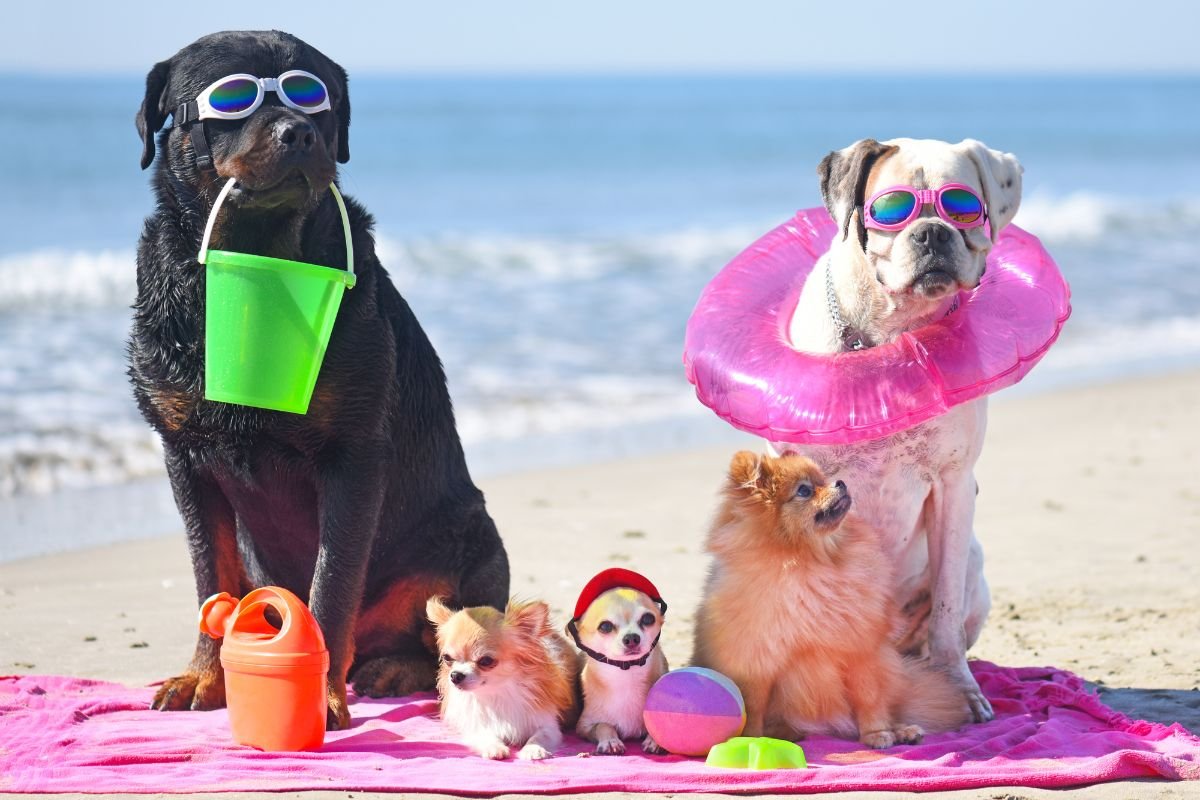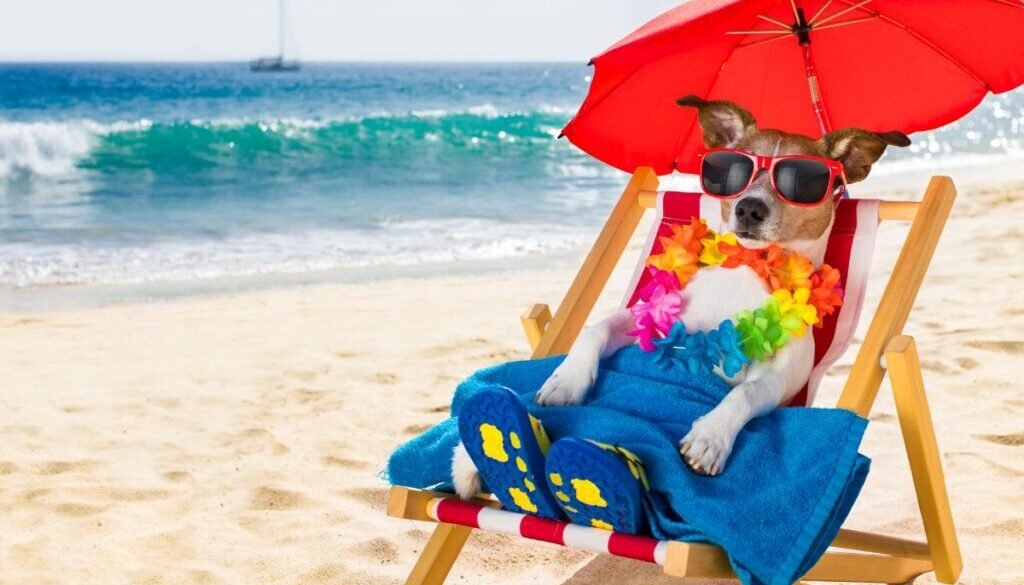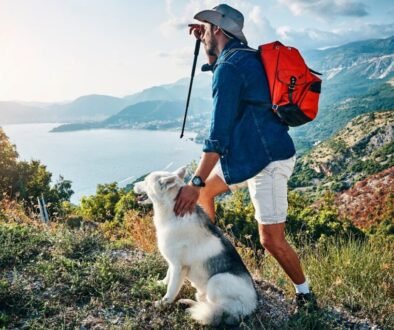Dog Beach Days: Tips for a Paws-itively Perfect Outing with Your Pup
Why Take Your Dog to the Beach?
Have you ever wondered if dogs enjoy the beach as much as we do? Spoiler alert: they absolutely love it! There’s something magical about seeing your furry friend dash through the sand, splash in the waves, and wag their tail with pure joy. But planning a dog-friendly beach day isn’t as simple as hopping in the car and hitting the sand.
According to the American Pet Products Association, 69 million households in the U.S. own at least one dog. That’s a lot of potential beach buddies! Yet, a shocking number of dog owners underestimate the prep work required for a safe and fun day by the water. No one wants their outing to end with a sunburned pup, an upset stomach from saltwater, or a tangle with another dog.
Fear not! This guide will walk you through everything you need to know to make your next dog beach trip a paws-itively perfect adventure. 🐾
Essential Preparations Before You Go
Check Beach Rules
Not all beaches are dog-friendly, and even those that welcome pups often have specific rules. Before you pack up, research the regulations for the beach you’re planning to visit.
Some beaches allow off-leash freedom, while others require leashes at all times. Websites like BringFido are fantastic for finding dog-friendly spots near you. Ignoring the rules can result in fines, so it’s worth doing your homework.
Pack the Right Gear

Packing for a beach day with your dog is more involved than grabbing a towel and sunscreen. Here’s a checklist to ensure you have everything you need:
- Fresh Water and a Portable Bowl: Keep your dog hydrated to avoid heatstroke.
- Dog Sunscreen: Yes, dogs can get sunburned, especially on their nose, ears, and belly. Use only pet-safe sunscreen, as human products may contain ingredients like zinc oxide, which can be toxic to dogs if ingested.
- Poop Bags: Always clean up after your pup to keep the beach pleasant for everyone.
- Towels: For drying off and providing a shady spot to rest.
- Dog Life Jacket: Essential for dogs who aren’t strong swimmers.
- Toys: Floating fetch toys or frisbees are a big hit.
- First Aid Kit: Include items like antiseptic wipes, tweezers (for splinters or thorns), and bandages.
Dog Beach Etiquette 101
Respect Other Beachgoers
The beach is a shared space, so it’s important to be mindful of others. Not everyone is comfortable around dogs, and some may even have allergies or fears. Keep your pup from running up to strangers or stealing food from picnic blankets.
Keep Your Dog Under Control

Even at off-leash beaches, it’s crucial to keep your dog under voice command. If your pup tends to ignore you when distracted, consider using a long leash to give them some freedom while maintaining control.
Safety Tips for a Stress-Free Beach Day
Hydration and Shade

Dogs can overheat quickly, especially when playing under the sun. Make sure your pup has access to fresh water at all times and bring along an umbrella or beach tent for shade.
Pro Tip: Use a cooling vest or mat to help your dog regulate their temperature during the hottest parts of the day. Cooling vests are lightweight garments that use evaporative cooling to help your dog regulate their temperature. Simply soak the vest in water, wring it out, and let your dog wear it during the hottest parts of the day.
Avoiding Hidden Dangers
While beaches are full of fun, they can also hide a few surprises. Keep an eye out for hazards like hot sand, sharp shells, or glass to ensure your pup stays safe and happy.
- Hot Sand: If the sand feels too hot for your hand or bare feet, it’s too hot for your dog’s paws. Bring dog booties or stick to cooler times of the day, like early morning or evening.
- Sharp Shells and Glass: Check the sand for sharp objects before letting your dog roam.
- Saltwater Ingestion: Too much saltwater can cause vomiting or dehydration, and in severe cases, it may lead to salt poisoning (hypernatremia), which requires immediate veterinary attention. Keep an eye on your dog’s drinking habits.
Making the Most of the Day
Games to Play with Your Dog

Beach trips are perfect for interactive games. Try these to keep your pup entertained:
- Fetch: Use a water-friendly ball or toy.
- Tug-of-War: Bring a sturdy rope toy for a sandy showdown.
- Hide and Seek: Bury a toy in the sand and let your dog dig it up.
Note: “Don’t forget to pack some treats! Use them to reward good behavior or encourage your dog to learn new games.”
Capturing the Moment

Don’t forget to document the day! Use your phone or a camera to snap some action shots.
Pro Tip: Get down to your dog’s eye level for the most dynamic photos. For the best lighting, aim for early morning or late afternoon (golden hour). Overcast days also work well to avoid harsh shadows.
Post-Beach Care for Your Pup
After a fun-filled day, take some time to care for your dog. Rinse off any sand or saltwater to prevent skin irritation. Check their paws for cuts or debris, and offer plenty of water and a cozy spot to rest.
FAQs
- What if my dog is scared of water?
Start slow. Let your pup explore the shoreline without forcing them into the water. Gradually build their confidence with positive reinforcement, such as treats or praise, whenever they take small steps toward the water. - How can I tell if my dog is overheating?
Watch for signs of overheating, such as excessive panting, drooling, or lethargy. Move your dog to a shaded area, offer fresh water, and use a cooling vest or damp towel to lower their body temperature. If symptoms persist, seek veterinary care immediately. - Are there specific breeds that shouldn’t go to the beach?
Brachycephalic breeds (like Bulldogs and Pugs) can struggle in hot, humid environments due to their short snouts. Always take extra precautions with these breeds, such as providing ample shade and limiting their time in the heat. Dogs with thick coats, like Huskies, may also overheat quickly, so monitor them closely. - How do I clean sand out of my dog’s fur?
After a beach day, start by rinsing your dog thoroughly with fresh water to remove sand and salt residue. Focus on areas like their paws, belly, and between the toes where sand tends to get trapped. Use a dog-safe shampoo during bath time to help loosen and wash away any stubborn grains of sand. After rinsing, towel dry your dog and brush their fur to remove any remaining particles. For long-haired breeds, a detangling spray can help keep their coat smooth and sand-free. - What should I do if my dog eats sand?
Eating small amounts of sand is common, especially if your pup picks up toys or chews on sticks at the beach. However, large amounts of sand can lead to a condition called sand impaction, which can cause stomach discomfort, vomiting, or difficulty pooping. If you notice your dog showing these symptoms or suspect they’ve ingested a lot of sand, contact your veterinarian immediately. To prevent this, discourage your dog from digging excessively or eating food directly off the sand.
Conclusion
Taking your dog to the beach can be one of the most rewarding experiences, strengthening your bond while giving them an outlet for exercise and fun. With a bit of preparation and mindfulness, you can ensure every beach outing is safe, enjoyable, and unforgettable. So pack your gear, grab your leash, and hit the sand—your pup will thank you with wagging tails and sandy kisses! 🐾



